
Station Name: STOCKTON (St John's Crossing)[Source: Geoff Merrington]
old5.jpg) The Stockton & Darlington Railway's booking office at St John's Crossing, Stockton-on-Tees, around 1900. In the early days of the Stockton & Darlington Railway the company adapted existing buildings rather than constructing new ones, and so adopted the practices of road coach operators. This house is said to have been used as a passenger booking office from about 1830. It is however also possible that tickets were sold in the Railway Hotel which is seen at the rear. This was common practice
for the S & D. Photo © National Railway Museum and SSPL 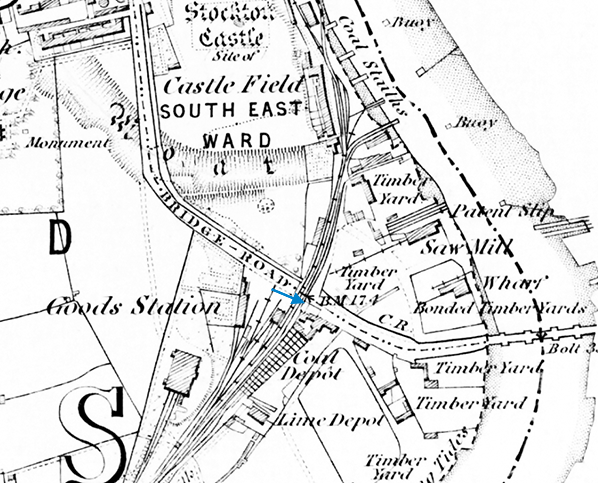
1859 1,10,560 OS map. St Johns crossing is seen, the line continuing to the coal staiths
on the River Tees. 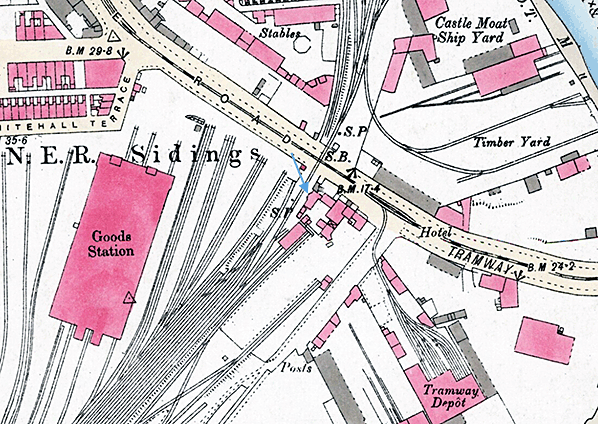
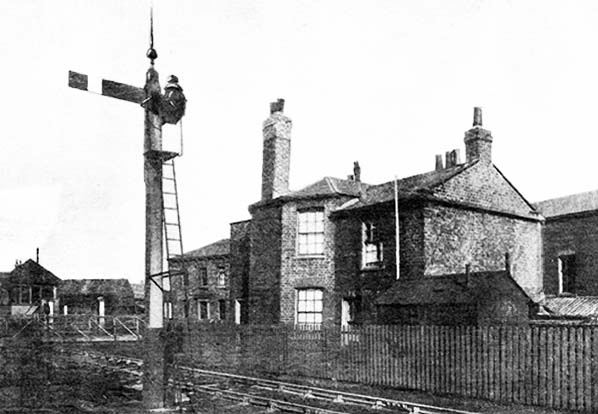
Stockton & Darlington weigh house at St John's level crossing. Beyond the level crossing the line terminated at the River Tees coal staithes.
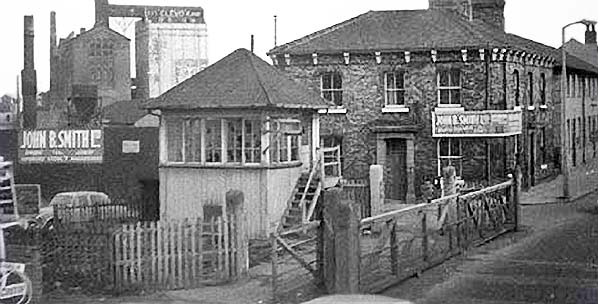 St John's level crossing c1950s
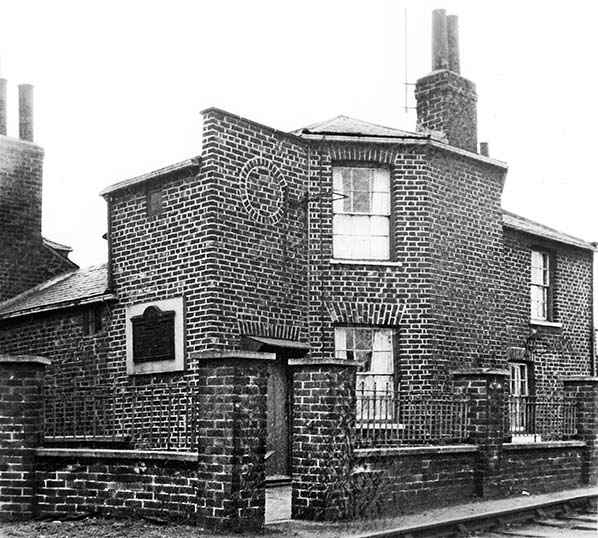
Stockton & Darlington weigh house c.early 1950s. A commemorative tablet has been fixed to the wall of the building. Note the chimney stack seen in the two pictures above has been reduced in height.
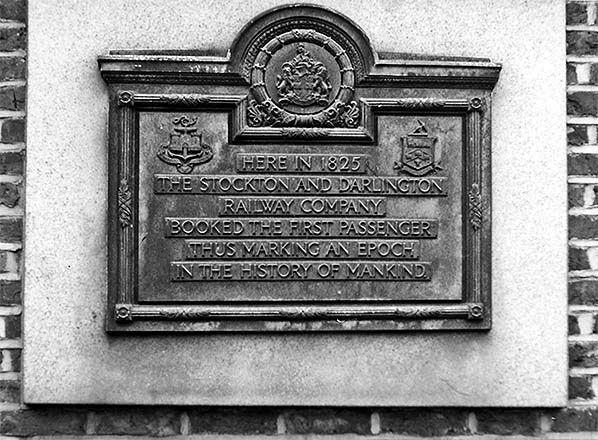
The commemorative tablet on the side wall of the building in the 1950s. This has now been removed.
Photo by Walter Dendy 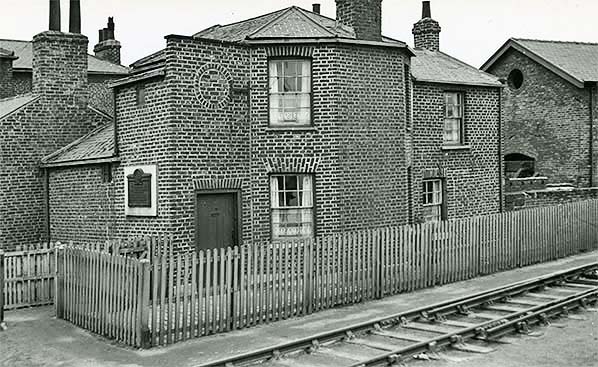 Stockton & Darlington weigh house in the 1950s.
Photo by Walter Dendy 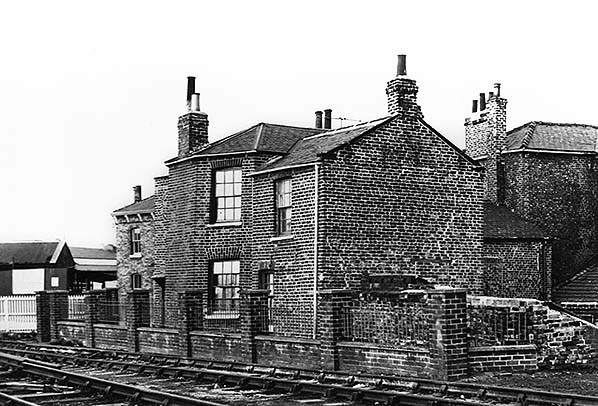
Stockton & Darlington weigh house in the 1950s.
Photo from John Mann collection old8.jpg) St John's level crossing and the weigh house in May 1961. The building on the far left is the Railway Hotel; this may have been where tickets were sold rather than from the weigh house.
Photo by Brian Johnson 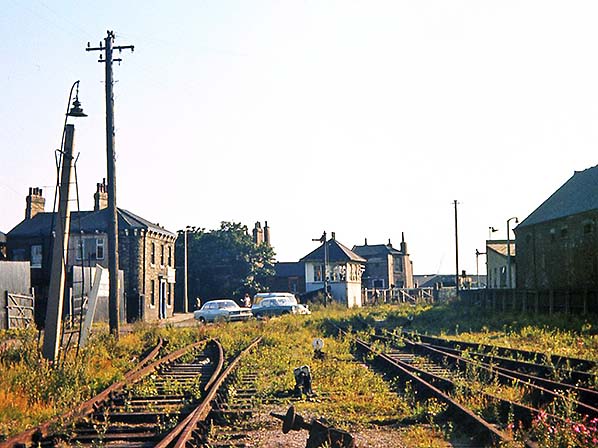
Looking south-west towards St John's level crossing in August 1968. The Wharf Exchange Sidings were clearly out of use by this time.
Photo by Brian Johnson 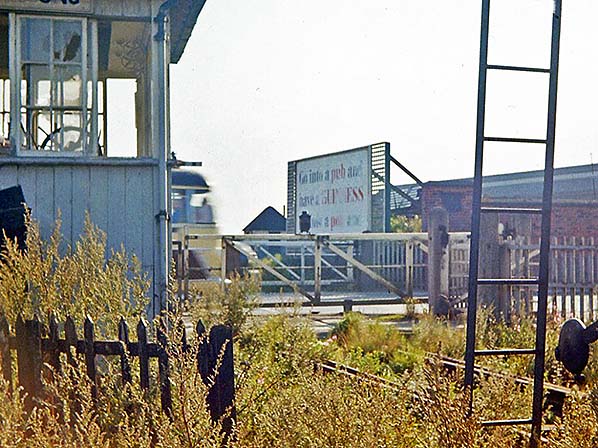
St John's level crossing in August 1968. Note the black rectangle on the brick wall to the right of the level crossing. This is the commemorative tablet that can now be seen on the front of the weigh house. Clearly when the wall was demolished the tabled was saved and relocated to the weigh house.
Photo by Brian Johnson 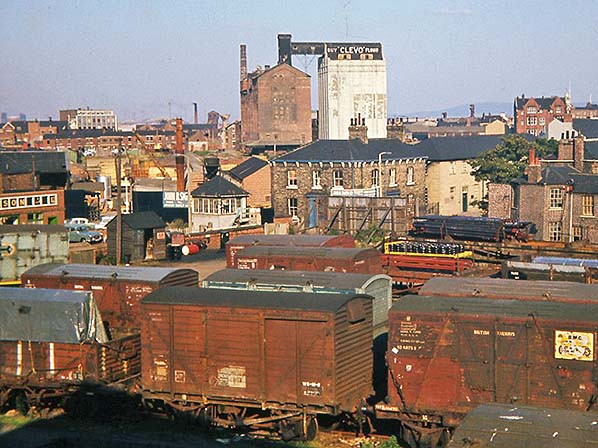
View of the level crossing and weigh house seen from the traffic office at the South Stockton goods depot in August 1968.
Photo by Brian Johnson 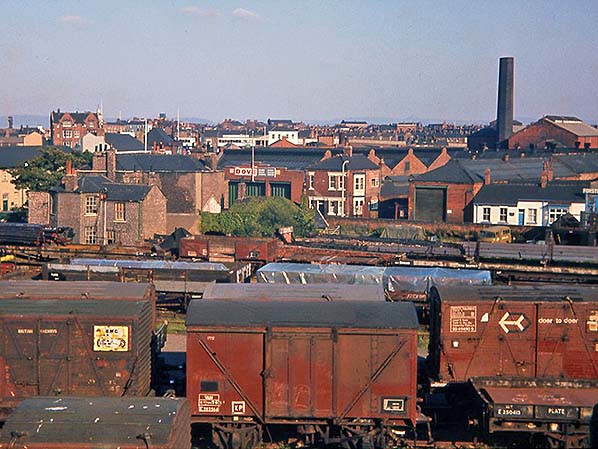 View of the weigh house seen from the traffic office at the South Stockton goods depot in August 1968.
Photo by Brian Johnson 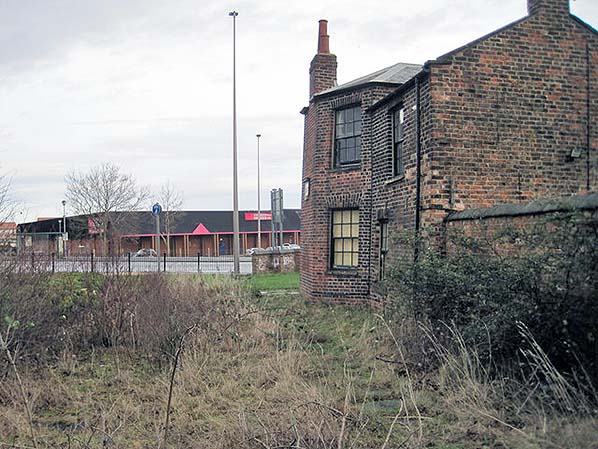
View north-east across the site former St Johns level crossing in January 2015. As built we would be looking towards the coal staithes on the River Tees.
Photo by Nigel Thompson, reproduced from Geograph under creative commons licence 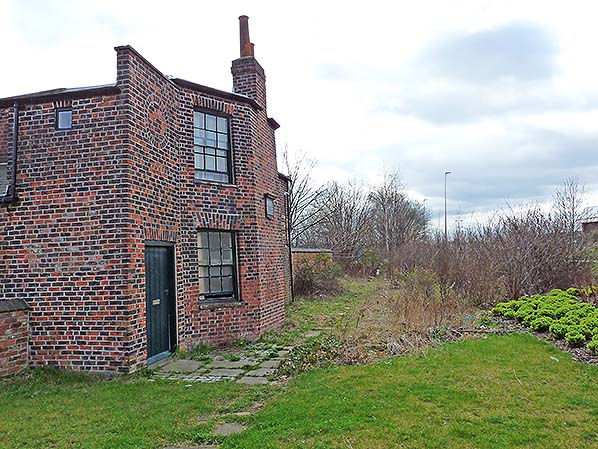 Looking south-west from the site of St John's level crossing in June 2015. The backward slope of the building is apparent. Looking south-west from the site of St John's level crossing in June 2015. The backward slope of the building is apparent.Photo by Hornbeam Arts 2.jpg)
3.jpg)
The tablet on the front of the building commemorates the laying of the first rail in 1922. This tablet was originally mounted on a brick wall adjacent to the level crossing but was relocated to the building when the wall was demolished following closure of the goods yard.
Photo by Geoff Merrington Click on thumbnail to enlarge
|






 Home Page
Home Page